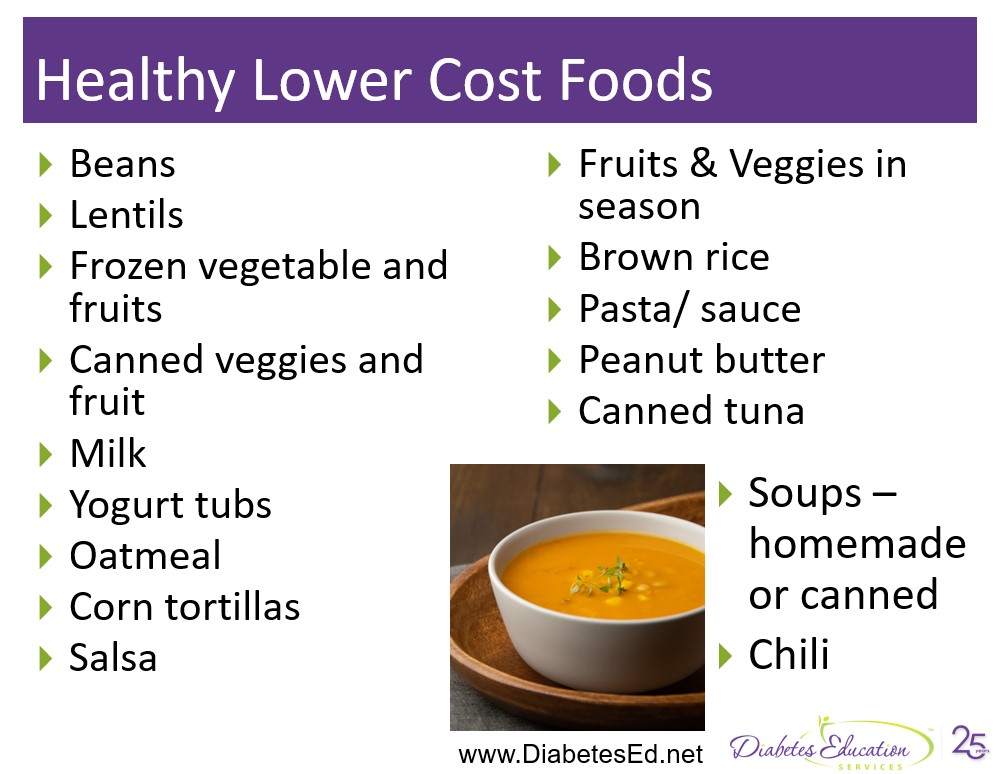With food costs on the rise, many people with diabetes are struggling to figure out how to pay for rent, food, and medications. According to the most recent statistics, about 20% of people with diabetes struggle with food insecurity.
In a 2021 Diabetes Care article, the stats are even worse for people with diabetes on Medicaid insurance. “Nearly one-third (32%) of Medicaid enrollees with diabetes were food insecure, 24 percentage points higher than their counterparts with private insurance (7%). The prevalence of food insecurity was highest among Medicaid enrollees with insulin-dependent diabetes; 44% were food insecure, over six times higher than their counterparts with private insurance.”
The irony is that those who would most benefit from nutritious and healing foods are least able to afford them.
As health care advocates, we can identify those with food insecurity by asking standardized questions like,
- “Within the past 12 months, we worried whether our food would run out before we got money to buy more.”
- “Within the past 12 months, the food we bought just didn’t last, and we didn’t have money to get more.”
If they say yes to one or both of these questions, we can help with problem-solving. In addition to having a ready list of food banks, free meal locations, and community refrigerators in the area, we can provide tips on saving money while choosing groceries.

If people have a way to heat up food, canned soups, chili, and beans are healthy lower cost options. In addition, warm breakfast cereals like oatmeal and cream of wheat can provide fiber and nutrition. Adding milk or some yogurt can add a boost of high-quality calories and protein.
Many people are unaware that frozen and canned fruits and vegetables often offer more robust nutrients than their fresh counterparts (depending on harvest and shelf-time). Fruit packed in corn syrup is often cheaper than fruit packed in its own juice. One solution to this is to rinse the fruit under running water to remove the sugary packing liquid. Frozen fruit with some yogurt is a delicious dessert. Many frozen vegetables can be reheated in the microwave and are perfect in combination with brown rice, pasta, or beans to create nourishing meals.
Sandwiches with tuna and veggies or peanut butter, or quesadillas with salsa and cheese are some lunch options. Canned beans, lentils, tomatoes, and other veggies plus imagination and seasonings can be transformed into healthy meals that are delicious any time of day while being easy on the budget.
Resources & information on Eating Healthy from the Academy of Dietetics and Nutrition
For National Nutrition Month, I encourage you to check out the Academy’s website and download their handouts which are available in 7 different languages. I have downloaded a few to share with you.
- Eating Right on a Budget (English)
- Eating Right on a Budget (Spanish)
- Smart Snacking Tips for Kids (English)
- Smart Snacking Tips for Kids (Spanish)
Here are some additional healthy eating tips:
- Buy foods in season and shop locally when possible.
- Start a container or backyard garden to grow food at home.
- Plan meals and snacks ahead of time.
- Use a grocery list and shop sales when purchasing food.
Food and Prescription Medication Assistance
Individuals with diabetes and food insecurity may qualify for the Supplemental Nutrition Assistance Program (SNAP), a USDA program that provides food aid to those in need.
We can also help by evaluating if lower-cost medications are an option to help with prescription costs. If people need help affording their insulin prescriptions, they can visit InsulinHelp.org or call 1-800-DIABETES (800-342-2383).
Sign up for Diabetes Blog Bytes – we post one daily Blog Byte from Monday to Friday. And of course, Tuesday is our Question of the Week. It’s Informative and FREE! Sign up below!
The use of DES products does not guarantee the successful passage of the CDCES exam. CBDCE does not endorse any preparatory or review materials for the CDCES exam, except for those published by CBDCE.









